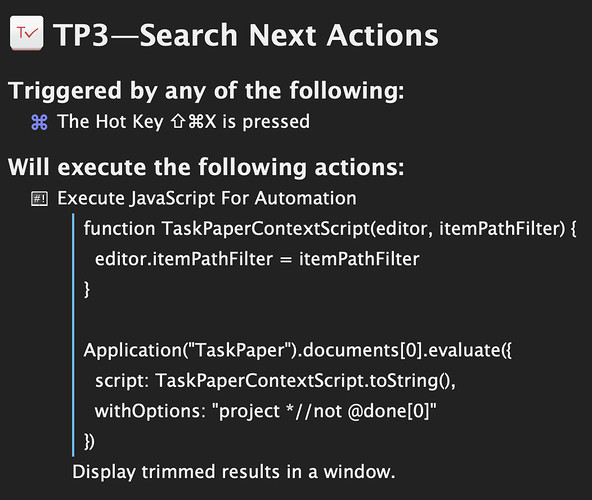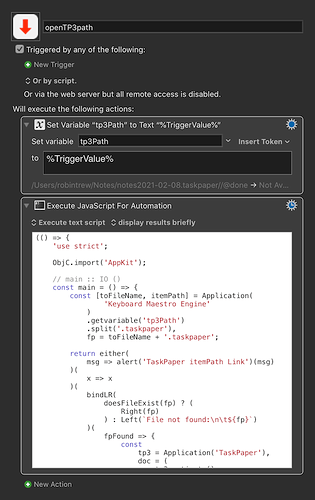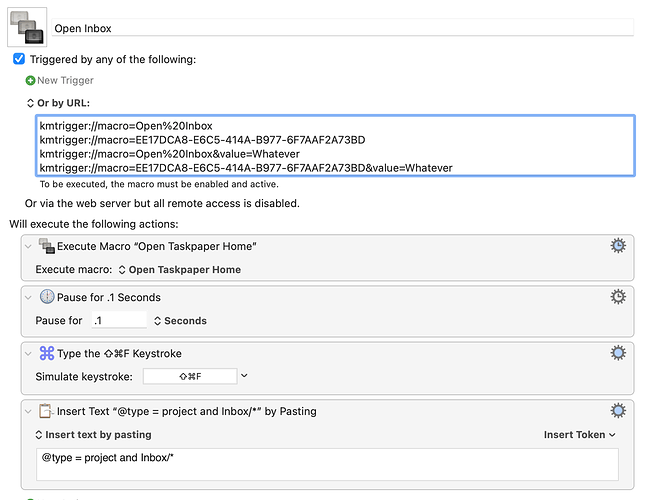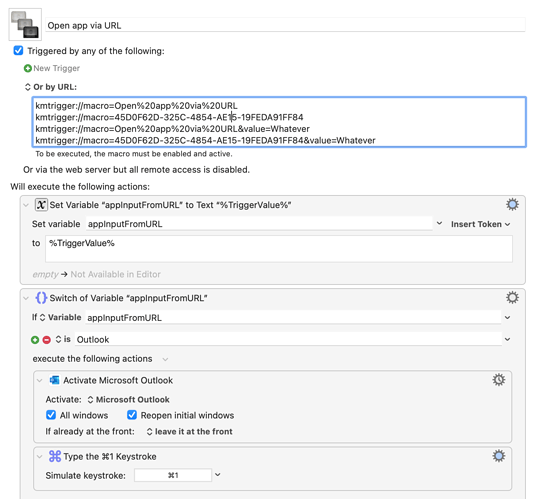Okay, coming up with something for TaskPaper is different for a big reason.
Most of the apps that make use of URL’s the best are are based on a database. Although the files used in the app itself maybe something that other’s can use, the apps themselves have a database. Before anyone gets defensive about the reasons TaskPaper does one thing or another, let me simply say that this is not a complain, just an observation.
I do think that the future is going towards two different ways of doing things in apps. Some apps have started to have a mix of open/close files that I think Devonthink pioneered back in the day where that seemed to be the direction Apple was taking (Contacts using CardDav, Calendar using CalDav, etc) where the apps themselves provide additional functionality and power to the open standard source files that are used by these databases.
Examples of those today are apps like NotePlan, Nvalt, and Typora.
The other is a more recent movement towards a close database based programs that use open standards to edit and maintain the information within the databases closed such as Bear, Ulysses (this app can do both, but the push has been towards their own model now), Agenda, etc. that has shown incredible potential and is able to do things that are simply not possible under any other model.
Whether TaskPaper chooses one or the other one, that of course, would change what can be accomplished with URL Schemes. What is clear is that one of these paths has to take place for TaskPaper to gain such features as;
- Global searches.
- To be able to sync preferences and certain searches across devices independently from the source files.
This would open up the ability to use Schemas to simply locate certain “files” within an app and reference them easily. For example, one could have an URL Schema that opens up my “Home” file. Or if I have a “general” todo list within a file, I could link have an URL to point me to a particular project within another file. So, one of the things URL’s could do is,
- Link/open TaskPaper Files
Now, one could also use an URL to create searches. I know that something like that is kind of possible using tags within TaskPaper, but it would be awesome if this could be accomplished from other Applications.
- Search.
The other thing that could be done would be adding a task. This wouldn’t be as useful right now because we cannot specify where this task ought to go; but it would still be useful since one can simply copy the task into the particular file/place the task needs to go. Specially since many of those actions can be automatically created by other apps, this would be a great gain regardless or the ability of where the task is created. An example of this would be to create templates for repetitive tasks.
- Create Tasks
Now, to answer your second question. The apps that come to my mind right now in the Mac are, Mindnote, Ulysses, Things, and Devonthink.
I think that Devonthink is probably the worse of the lot, but since there is so much already out there for Devonthink, it needed to be included. The best of them is Things. The reasons are many, but their documentation is excellent in explaining the possibilities, examples; and they even created a “URL creator” that I think is the cherry on top of the whole thing. Here is a link to it.
Things URL Scheme
But I think that the best examples and the reason of the resurgence of URL schemes is found within iOS. Many of those apps have a Mac counterpart that I mentioned above, but the iOS only apps that I think restarted the whole thing are Draft and Workflow. You should check some of the articles that MacStories and the Sweet Setup have created that explain and show the possibilities and power behind this.
Again, thank you for being open to suggestions and taking the time to read this (If you do  )
)



